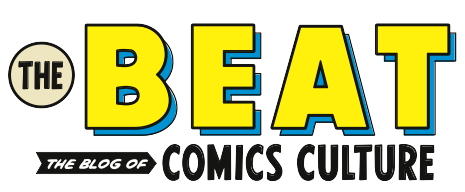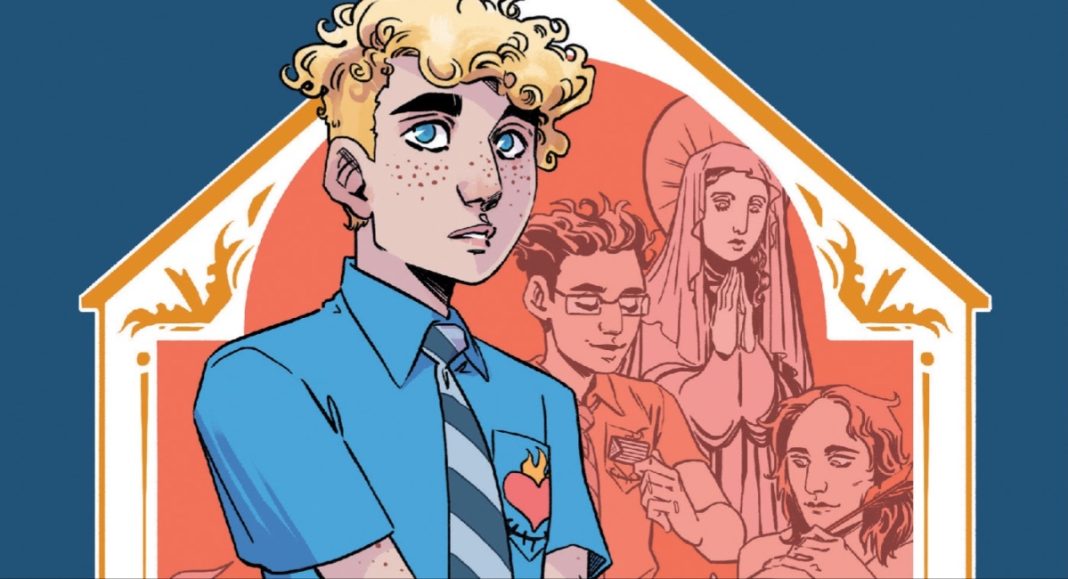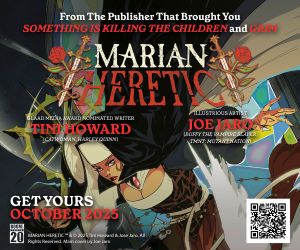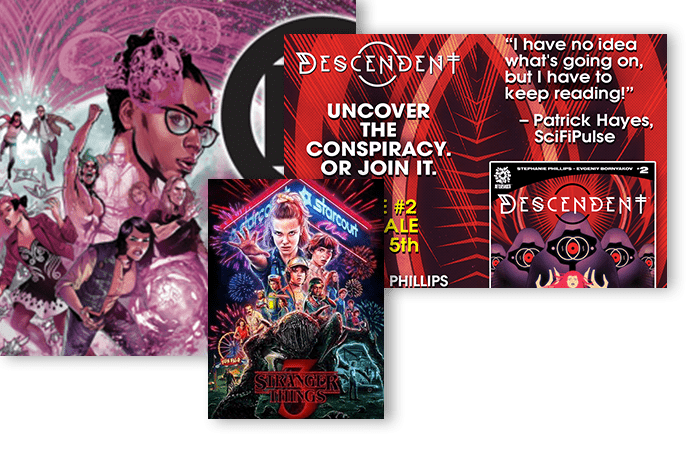Hey, Mary! by writer Andrew Wheeler (Cat Fight, Another Castle) and visual storyteller Rye Hickman (The Harrowing, Bad Dream) was released by Oni Press on Tuesday, April 15, 2025. It tells the story of a young Catholic boy, Mark, learning to accept every aspect of himself.
The official description of Hey, Mary! reads, “Mark is a good Catholic boy. He goes to church, he says his prayers, and he spends too much time worrying about hell. When Mark realizes he has a crush on another boy in his school, he struggles to reconcile his feelings with his faith as the weight of centuries of shame and judgment—and his fear of his parents’ response—presses on his shoulders. Mark seeks advice from his priest, as well as a local drag performer, but also receives unexpected input from key figures in Catholic history and lore, including Joan of Arc, Michelangelo, St. Sebastian, and Savonarola. Ultimately, only Mark can answer the question: Is it possible for him to be both Catholic and gay?”
The Beat spoke with Hey, Mary!‘s creative team, Andrew Wheeler and Rye Hickman, before the graphic novel’s April 15, 20225, release. Read on to learn more about the “intensely personal” nature of the Hey, Mary!, how the book’s visual language was developed, their experiences of releasing a story about a growing up “queer in a family of faith” in this political climate, and Hickman’s fears about traveling to promote the work.
OLLIE KAPLAN: Did the inspiration for Hey, Mary!, and its characters draw from your personal experiences? If yes, what role (if any) does Catholicism play in your life today?
ANDREW WHEELER: The lead character in Hey, Mary! is Mark, a teenager from a proudly Catholic family whose feelings for his friend Luka throw him into disarray. He seeks guidance from the people in his life but also gets unexpected advice from saints and figures from history. You might tell from that description that it’s not an autobiographical story! It is an intensely personal story, nonetheless, because it articulates my own struggles between my faith and my queerness. I was raised in the Church, and Catholicism is the foundation of my values, beliefs, and relationship with the universe! I lived this struggle, and in a sense this book is an act of faith.
KAPLAN: Rye, I can’t find information on your spiritual background, so please feel free to answer this question, too, if it fits with your personal and/or family history.
RYE HICKMAN: I actually grew up in the evangelical church, which is why when Andrew approached me about Hey, Mary! I was surprised by how similar my teenage experience in the church was to Mark’s, our protagonist. So much of his struggle with his faith and his newly-discovered queerness, seems fairly universal, and I’m really looking forward to the book reaching readers from all sorts of Christian sects.
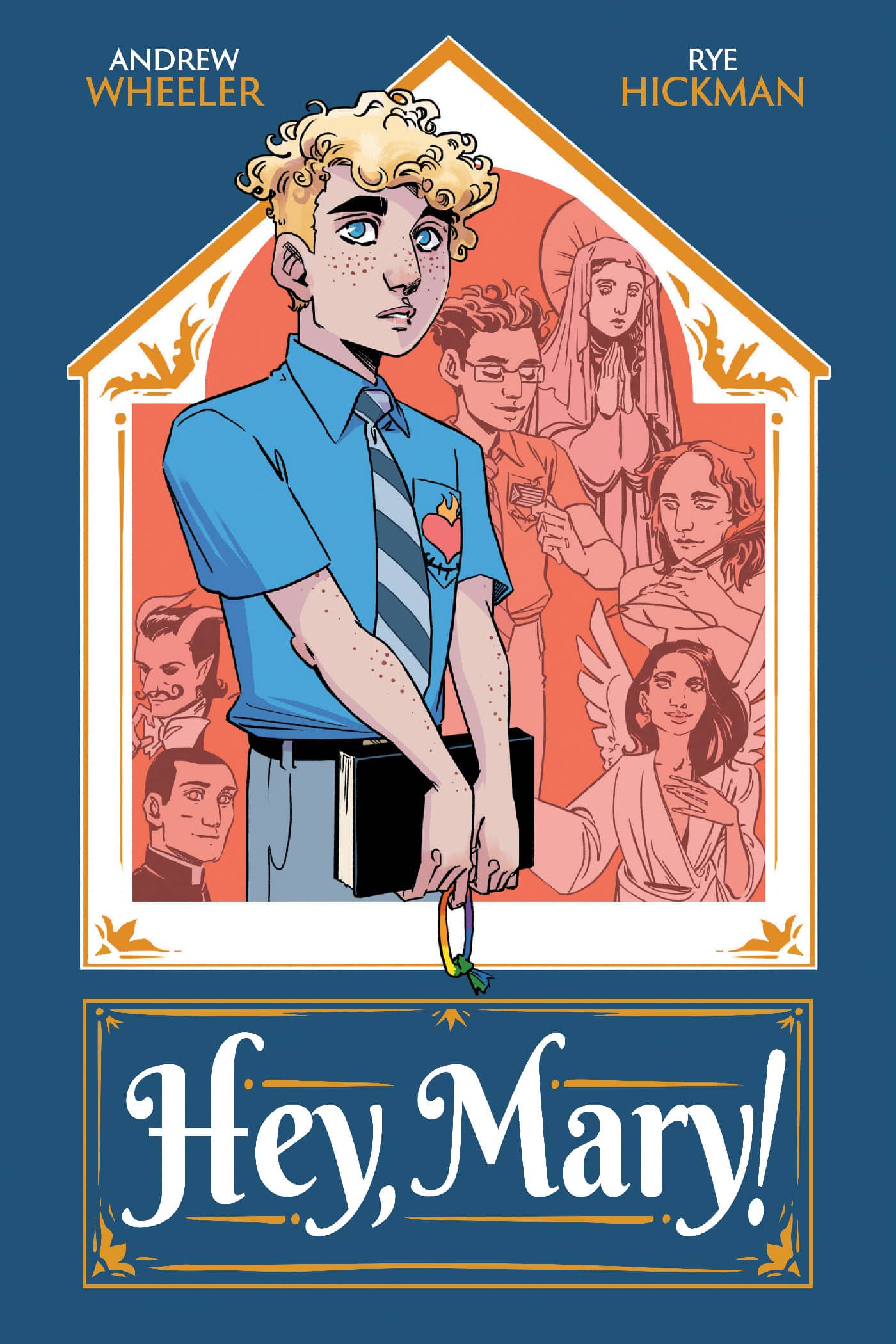
KAPLAN: You told GamesRadar that, like Hey, Mary!‘s protagonist Mark, you grew up “queer in a family of faith.” How do you hope Mark’s story will aid both LGBTQ+ and cis-het readers in understanding what it’s like to be queer in a family of faith?
WHEELER: I hope queer readers see themselves in the work, even if the experience is not exactly their own, and I hope everyone who reads it can see the humanity in both sides of this equation.
KAPLAN: Were there any stereotypes or tropes you intentionally tried to avoid or subvert, e.g., do stories like Mark’s need to be told differently in mainstream media?
WHEELER: I don’t think I was really thinking in terms of stereotypes, either leaning into them or steering away from them. I did want to approach the character of Jojo with particular sensitivity, because Jojo is a genderqueer drag performer, and this is a brutal time for gender diverse people and for drag performers. We have a scene where Jojo is reading to kids at a library, and who knew that was going to become controversial?
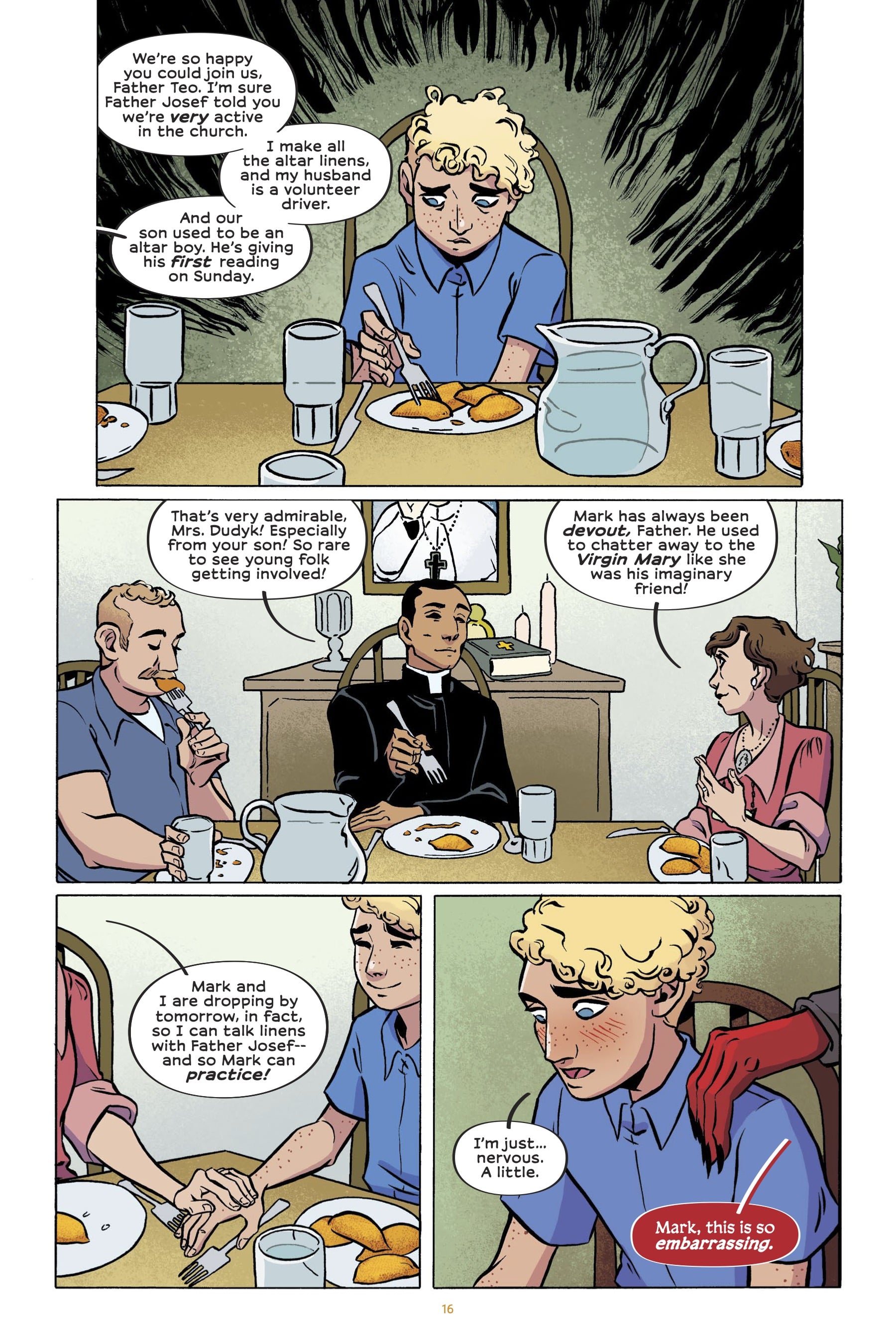
KAPLAN: How did you develop Hey, Mary‘s visual language—especially visual cues that convey internal conflict?
HICKMAN: I decided to ink Hey, Mary! traditionally, and I’m a brush guy all the way. Brush offers the opportunity for some extremely flexible and organic mark-making, which I often brought in to help communicate internal conflict. I was expanding the idea of emanata into the background: long, wispy, dark tendrils when Mark is feeling despair, or vertical ‘speed lines’ when he’s absolutely freaking out. It’s a little experimental, I guess, but I’ve been doing some form of that for a while. It works SO well when done traditionally, and I really got into it.
KAPLAN: Is there any part of Hey, Mary! you’re especially proud of—visually or narratively?
HICKMAN: The whole book is an amazing achievement- comics take so much work, and are such a team effort! I’m incredibly grateful to our colorist, Hank Jones, for his thoughtful touches and gorgeous palettes, and our letterer Frank Cvetkovic, for breathing life into the dialogue. There’s a sequence in the book where Jojo, our nonbinary drag queen, is retelling some bible stories to Mark and his friend/crush Luka. I think the teamwork really sings in that sequence. I’m very proud of it.
WHEELER: This was a joyful collaboration, and I’m endlessly grateful to Rye, Hank, and Frank for bringing their hearts and souls to the page! The scene where Mark meets the saints in the library is a favorite of mine because of the personalities of the saints and the audacity of the sequence. Though the chapter where Mark sits down with his parents towards the end of the book was really important to get right, and Rye’s acting and storytelling really sold the moment. We have a lot of fantastical moments in this book, but that is the one chapter where everything is absolutely grounded.
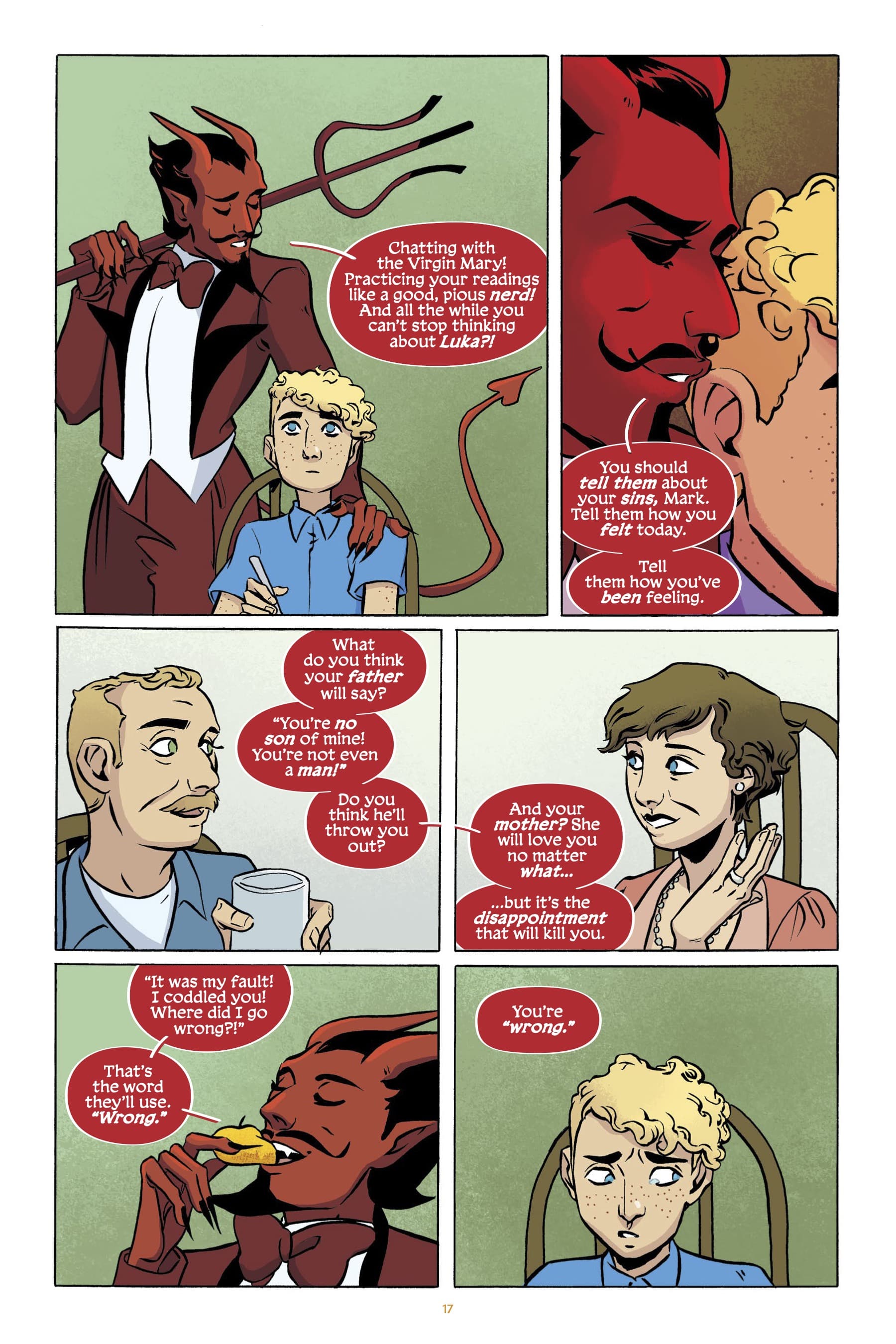
KAPLAN: This is a coming-of-age story, so I want to ask about your journeys as creatives and people. Like Mark, did religious iconography play a role in understanding your sexuality and/or gender expression?
HICKMAN: I think religious iconography is an interesting lens to view sexuality and gender expression from, but here is a place where I differ greatly from Mark, because evangelical iconography was, in the mid-2000s, Veggie Tales, WWJD bracelets, and co-opting emo sensibilities while the emo kids pretended not to notice. Oh, and the Left Behind video game, I suppose. I jest.
But the Catholics have swagger here that I fortunately got to experience in my art history courses, at least. I got very obsessed with the work of Sandro Botticelli, thanks to one of those. Botticelli’s figures are graceful and idealized, and he was the rare painter who seemed to paint people first and gender second. I don’t know if that makes sense exactly, and maybe I’m projecting, but there definitely still exist drawing manuals that insist men and women should be approached differently from the very first line you put down. I feel like you can see the difference, and on top of that, Botticelli depicted with great detail the sort of gender expressions that were fashionable for his time, but make no sense with our modern constructions. All of this had me hooked and helped me see that the rigid binary of my world was invented and malleable.
WHEELER: When it comes to iconography, Catholics absolutely turn it out. A portrait of Saint Sebastian is the trigger for Mark’s awakening for good reason—that one saint has been setting bells a-ringing in gay boys’ heads for centuries. Saint Sebastian and Michelangelo‘s David are like the men’s underwear aisle of the department store for Catholics.
Of course, I also had comics, and Rick Leonardi‘s Colossus was just as much of an awakening! Comics and Church were the two places a boy could see abs before the internet. There are some odd parallels between my relationship with Catholicism and my relationship with comics, because comics were another formative influence that felt homophobic and exclusionary. While we’ve seen progress, a lot of it is performative. The comic industry is not in the business of making amends for past harms. The fact that I could tell this story in comics form feels like a victory.
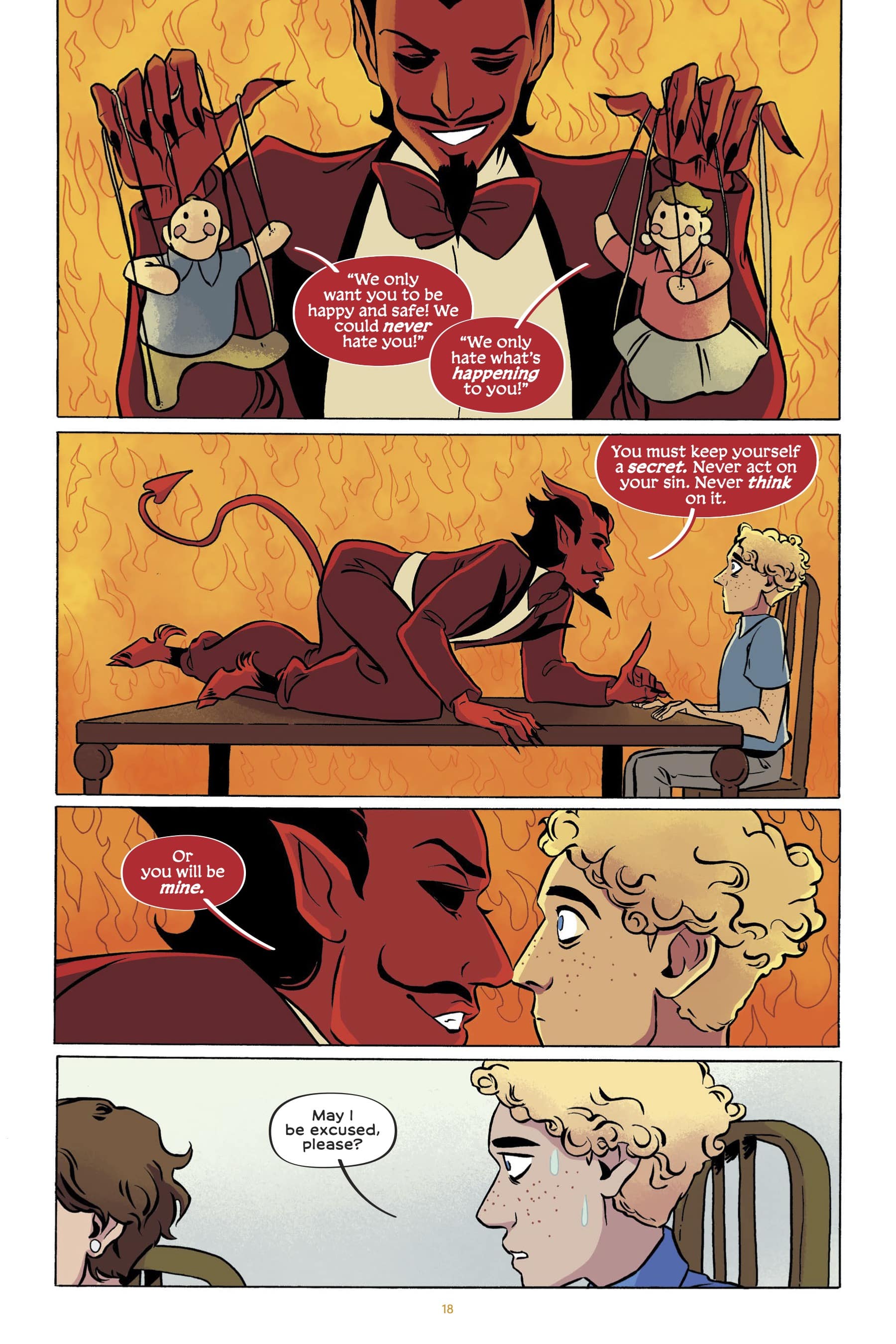
KAPLAN: I love the goat pictures on your social media accounts. Can you tell me more about your goats and how you got into them?
WHEELER: I went on a farm field trip when I was little, where we were all given a bag of feed for the animals, and a goat stole my bag and devoured it. I was scared of goats for a long time after that! But I love an outcast, and I’ve come to love goats precisely because they’re unfairly maligned as devilish. The idea of the scapegoat, the blameless bearer of other people’s sins, is just one of many indignities we can blame on Leviticus.
I’m fortunate to live near a city farm, Riverdale Farm (no relation to Archie), so going to check on “my goats” has become a very pleasant excuse for an afternoon walk!
KAPLAN: I hear you’re attending Prism’s Q Con. Can you tell me what you’re most looking forward to, and why attending small queer conventions is vital to you? (Interviewer note: I was confused by the Prism’s Q Con podcast guests!)
HICKMAN: I’m not sure where you heard that. I am not attending Prism’s Q Con this year. I do want to see if it could possibly be feasible for 2026, though. It sounds like a wonderful experience! I’m very glad it exists.
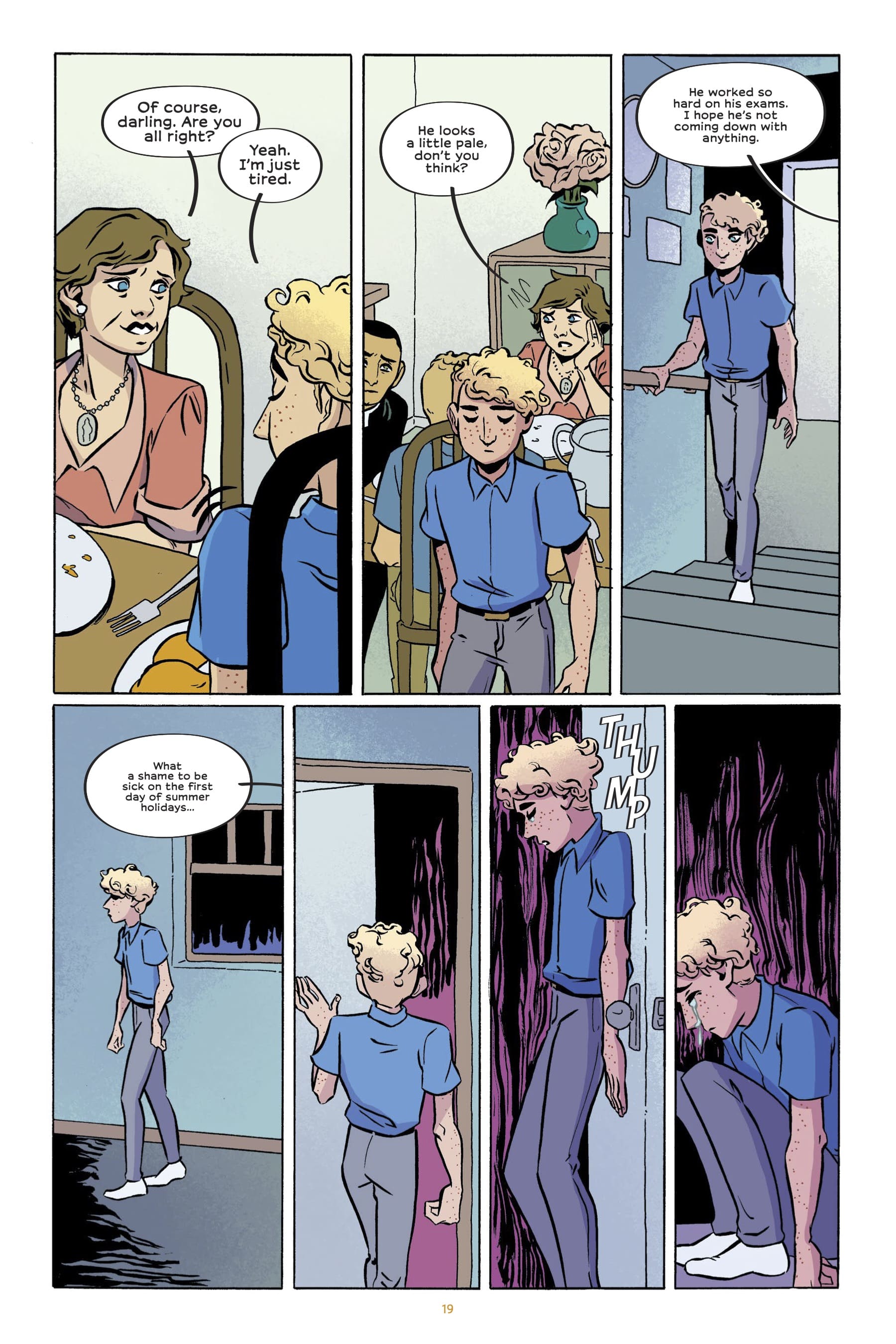
KAPLAN: Is there anything else you would like to add?
HICKMAN: I’m very grateful to Oni Press for their support of Hey, Mary! and I’m delighted that it is now out in the world for readers to experience!
WHEELER: This is a terrifying time to release this book into the world. I feel like I can’t even safely travel into the US to promote it, and the book may struggle to reach the people who most need to read it because of the way schools and libraries are having their freedoms stripped. Oni has been fearless in its support for this book, and I’m also grateful to Comics Beat for helping us to get the word out!
Hey, Mary! by Andrew Wheeler and Rye Hickman hit stores on April 15, 2025. It’s published by Oni Press and distributed by Simon & Schuster. Get your copy here!
